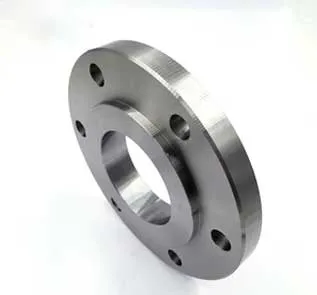-
Cangzhou Yulong Steel Co., Ltd.
-
Phone:
+86 13303177267 -
Email:
admin@ylsteelfittings.com
- English
- Arabic
- Italian
- Spanish
- Portuguese
- German
- kazakh
- Persian
- Greek
- French
- Russian
- Polish
- Thai
- Indonesian
- Vietnamese
- Zulu
- Korean
- Uzbek
- Hindi
- Serbian
- Malay
- Ukrainian
- Gujarati
- Haitian Creole
- hausa
- hawaiian
- Hebrew
- Miao
- Hungarian
- Icelandic
- igbo
- irish
- Japanese
- Javanese
- Kannada
- Khmer
- Rwandese
- Afrikaans
- Albanian
- Amharic
- Armenian
- Azerbaijani
- Basque
- Belarusian
- Bengali
- Bosnian
- Bulgarian
- Catalan
- Cebuano
- China
- China (Taiwan)
- Corsican
- Croatian
- Czech
- Danish
- Esperanto
- Estonian
- Finnish
- Frisian
- Galician
- Georgian
- Kurdish
- Kyrgyz
- Lao
- Latin
- Latvian
- Lithuanian
- Luxembourgish
- Macedonian
- Malgashi
- Malayalam
- Maltese
- Maori
- Marathi
- Mongolian
- Myanmar
- Nepali
- Norwegian
- Norwegian
- Occitan
- Pashto
- Dutch
- Punjabi
- Romanian
- Samoan
- Scottish Gaelic
- Sesotho
- Shona
- Sindhi
- Sinhala
- Slovak
- Slovenian
- Somali
- Sundanese
- Swahili
- Swedish
- Tagalog
- Tajik
- Tamil
- Tatar
- Telugu
- Turkish
- Turkmen
- Urdu
- Uighur
- Welsh
- Bantu
- Yiddish
- Yoruba

Dec . 21, 2024 17:24 Back to list
api 5l x52 psl1
Understanding API 5L X52 PSL1 A Key Standard in Pipeline Steel
In the modern energy landscape, the significance of efficient and reliable pipeline systems cannot be overstated. Transporting oil, gas, and other fluids over long distances requires materials that can withstand a range of environmental factors while maintaining structural integrity. Enter API 5L X52 PSL1—a prominent standard in pipeline steel that has garnered attention for its strength, durability, and overall performance.
What is API 5L?
API 5L is a specification published by the American Petroleum Institute (API) that covers welded and seamless pipes designed for use in pipeline systems. The 5L designation denotes the specification for line pipe, which is used primarily for the transportation of oil and natural gas. The standard defines requirements for manufacturing, testing, and supply of line pipe, ensuring safety and reliability for industries relying on these essential materials.
Understanding X52 and PSL1
The designation X52 refers to the minimum yield strength of the steel pipe, which is 52,000 psi. This indicates that pipes conforming to this specification can handle significant pressure, making them ideal for demanding applications in oil and gas transport where high levels of stress are commonplace. The PSL in PSL1 stands for Product Specification Level, which differentiates the quality levels of the pipe. PSL1 represents the base level of quality with specific requirements for chemical composition and mechanical properties.
Chemical Composition and Mechanical Properties
API 5L X52 PSL1 pipes typically have a chemical composition consisting mainly of carbon, manganese, phosphorus, sulfur, and silicon. The precise formulation is vital as it contributes to the overall strength and corrosion resistance of the steel. The mechanical properties include yield strength, tensile strength, and elongation rates, which are critical factors that determine how a pipe will perform under real-world conditions.
api 5l x52 psl1

These pipes are often subjected to various tests, including mechanical tests for yield and tensile strength, and non-destructive tests to evaluate weld integrity. Meeting the stringent criteria set forth in the API 5L standards ensures that these pipes can endure the rigors of high-pressure environments and maintain long-term functionality.
Applications in the Industry
API 5L X52 PSL1 pipes are utilized extensively across various sectors, including oil and gas transportation, natural gas distribution, and water conveyance systems. Their ability to handle high-pressure fluids makes them indispensable in transporting crude oil from extraction sites to refineries and delivering natural gas to consumers. The use of X52 pipes ensures that the infrastructure is robust enough to prevent leaks and failures, which could lead to environmental hazards and economic losses.
Moreover, in addition to their application in pipeline systems, these pipes are also suitable for use in structural applications, such as pilings and industrial construction. The strength-to-weight ratio of X52 pipes allows for effective engineering solutions where high load-bearing capability is required.
Considerations for Selection
When selecting API 5L X52 PSL1 pipes for a specific application, several factors must be taken into account. Beyond the basic mechanical properties, considerations include the environmental conditions the pipeline will face, such as temperature fluctuations, soil conditions, and the presence of corrosive elements. Additionally, compatibility with other materials and adherence to industry regulations should guide the selection process.
Conclusion
API 5L X52 PSL1 represents a crucial material standard in the oil and gas industry, embodying strength, durability, and reliability necessary for transporting valuable resources. As infrastructure demands grow, the importance of high-quality pipeline materials continues to rise. Understanding the specifications and applications of API 5L X52 PSL1 is imperative for engineers, project managers, and industry stakeholders aiming to ensure safe and efficient delivery systems for vital energy resources. As we move toward a more interconnected world, the role of such robust materials will be crucial in supporting our energy needs.
Latest news
-
ANSI 150P SS304 SO FLANGE
NewsFeb.14,2025
-
ASTM A333GR6 STEEL PIPE
NewsJan.20,2025
-
ANSI B16.5 WELDING NECK FLANGE
NewsJan.15,2026
-
ANSI B16.5 SLIP-ON FLANGE
NewsApr.19,2024
-
SABS 1123 FLANGE
NewsJan.15,2025
-
DIN86044 PLATE FLANGE
NewsApr.19,2024
-
DIN2527 BLIND FLANGE
NewsApr.12,2024
-
JIS B2311 Butt-Welding Fittings LR/SR 45°/90° /180°Seamless/Weld
NewsApr.23,2024











